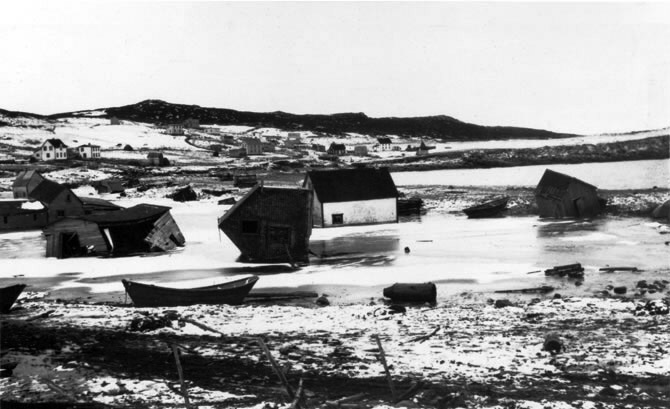Relating to tsunami generation, "landslide" is a general term that describes a number of types of ground movement, including rock falls, slope failures, debris flows, and slumps. While icefalls/avalanches and glacial calving (the breaking off of large pieces of ice from a glacier) are not really landslides, they act the same and are considered in this discussion of landslides.
Tsunamis can be generated when a landslide displaces the water from above (subaerial) or below (submarine). Tsunami generation depends on the amount of landslide material that displaces the water, the speed it is moving, and the depth it moves to.
Video file
Animation of a tsunami generated by a subaerial landslide. Source: The COMET Program
Near their source, landslide-generated tsunamis may be larger than tsunamis generated by earthquakes and can affect nearby coasts within minutes with little to no warning. These tsunamis usually lose energy quickly and rarely affect distant coasts.
Video file
Animation of a tsunami generated by a submarine landslide. Source: The COMET Program

While a number of forces can cause unstable slopes to suddenly fail, most landslides that generate tsunamis are caused by earthquakes. Even earthquakes that are not large enough to directly generate a tsunami may be large enough to cause a landslide that in turn can generate a tsunami.
A landslide-generated tsunami may occur independently or along with a tsunami directly generated by an earthquake, which can complicate the warning process and increase the losses.
Examples of landslide-generated tsunamis include:
- July 10, 1958 Southeast Alaska - A magnitude 7.8 earthquake triggered a number of submarine landslides, rock falls, and ice falls that generated tsunamis that killed five people. A rock fall into Lituya Bay sent water surging over the opposite shore, clearing trees around the bay up to a maximum height of 1,720 feet (525 meters). It is considered the highest tsunami ever recorded.
- On October 11, 1918 Puerto Rico - A magnitude 7.3 earthquake caused a submarine landslide that generated a tsunami. Waves up to 20 feet (6 meters) high struck the western and northern coasts of Puerto Rico. Damage from the earthquake and tsunami approximated $62 million (2017 dollars), and at least 140 lives were lost.
To learn more about landslides, visit the U.S. Geological Survey's Landslide Hazards Program.


